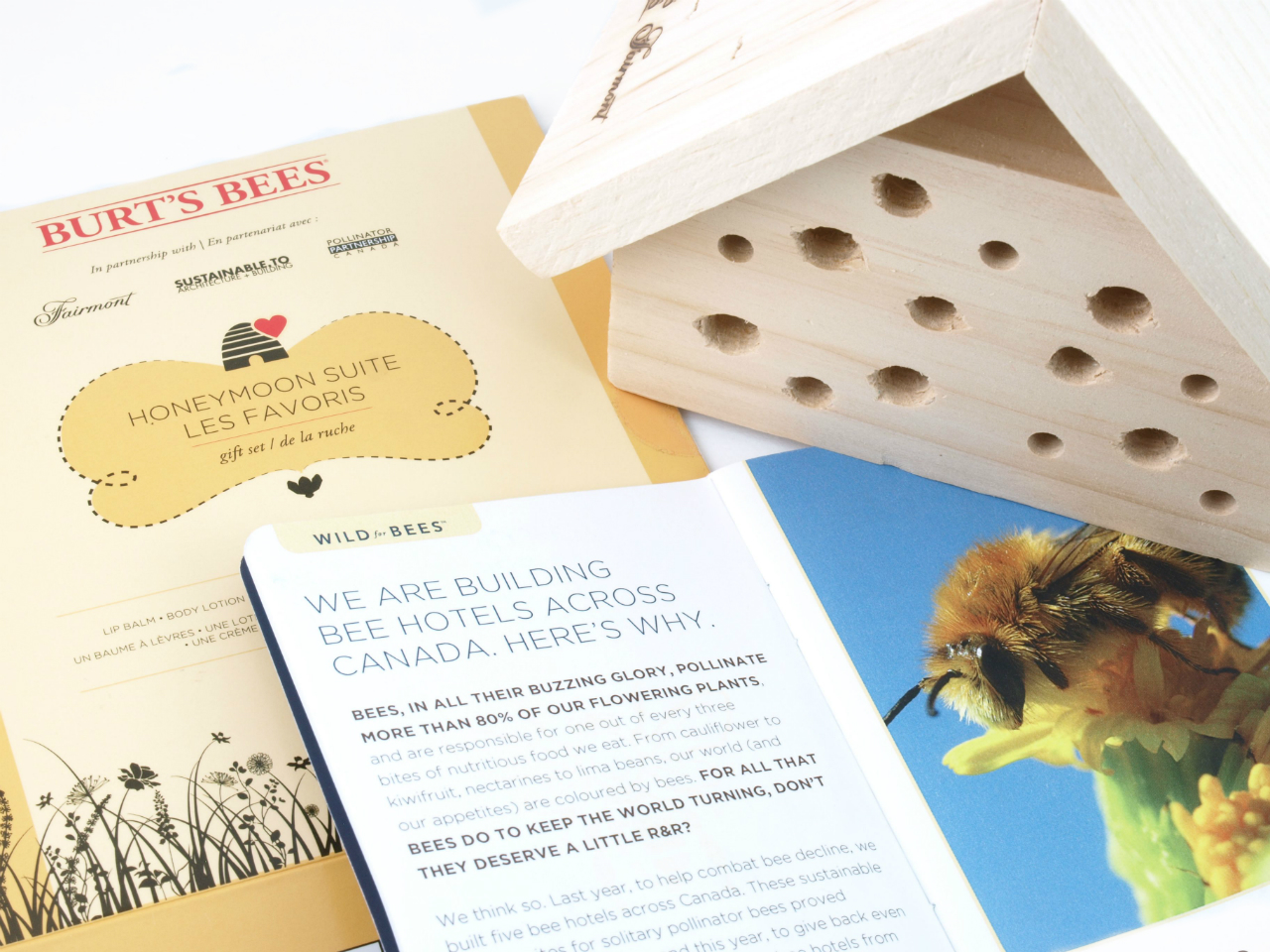Disclaimer: The products featured were provided for review.
In celebration of Pollinator Month last month, Burt's Bees partnered up with Fairmont Hotels & Resorts to install 16 more bee hotels across Canada. Since 2012, the Wild For Bees partnership between Burt's and Fairmont has established a total of 21 bee hotels to provide nesting space for solitary bees. Solitary bees don't produce honey but they make up 90 percent of the general bee population, and they are responsible for pollinating one-third of the food we eat.
Now you have the chance to support the Wild for Bees initiative with the new Burt's Bees Honeymoon Suite Kit ($14.99 CAD). 100% of the proceeds go towards Pollinator Partnerships Canada. To read more, click.......
Included in this kit are travel-sized Naturally Nourishing Milk & Honey Body Lotion, Soap Bark & Chamomile Deep Cleansing Cream, Coconut Foot Cream, Hand Salve, and a full-sized Beeswax Lip Balm. 100% of the proceeds from this cute little kit go towards Pollinator Partnerships Canada, an organization that's dedicated to the protection of bees.
• Less than half of the world's bees are capable of stinging, only female bees sting
• Foraging bees collect pollen and nectar to feed themselves and their young, they are not flying around looking for someone to sting
• Most bees only sting if you pinch or step on them, or if they get caught in clothing
• Honeybees and some bumblebees are defensive within 3 to 6 meters of their nest so stay back
• Ground-nesting yellow jackets are more likely to sting than pollinating bees, which are the ones that usually get the blame
Availability:
The Burt's Bees Honeymoon Suite Kit is available in stores now for $14.99 CAD. 100% of the proceeds go towards Pollinator Partnerships Canada.
In celebration of Pollinator Month last month, Burt's Bees partnered up with Fairmont Hotels & Resorts to install 16 more bee hotels across Canada. Since 2012, the Wild For Bees partnership between Burt's and Fairmont has established a total of 21 bee hotels to provide nesting space for solitary bees. Solitary bees don't produce honey but they make up 90 percent of the general bee population, and they are responsible for pollinating one-third of the food we eat.
Now you have the chance to support the Wild for Bees initiative with the new Burt's Bees Honeymoon Suite Kit ($14.99 CAD). 100% of the proceeds go towards Pollinator Partnerships Canada. To read more, click.......
 |
| Burt's Bees Honeymoon Suite Kit |
 |
| Bee Hotel (see how to make one yourself) |
What's a bee hotel?
Solitary pollinator bees (not to be confused with honey bees and bumblebees), make up 90% of the bee population. They help pollinate various plants that are part of our diet, but due to habitat loss, thousands of solitary bees are left without space for nests.
Luckily, we can help solitary bees by building bee hotels in our own backyard. Unlike wasps and bumblebees, solitary bees are very small. They lay eggs in the bee hotels and once the eggs hatch, they will move on to pollinate plants and flowers in other habitats, which means they are unlikely to disrupt you or your family.
Finally, I want to share with you guys some bee facts provided by Wild for Bees that I found pretty interesting:
• Foraging bees collect pollen and nectar to feed themselves and their young, they are not flying around looking for someone to sting
• Most bees only sting if you pinch or step on them, or if they get caught in clothing
• Honeybees and some bumblebees are defensive within 3 to 6 meters of their nest so stay back
• Ground-nesting yellow jackets are more likely to sting than pollinating bees, which are the ones that usually get the blame
Availability:
The Burt's Bees Honeymoon Suite Kit is available in stores now for $14.99 CAD. 100% of the proceeds go towards Pollinator Partnerships Canada.

